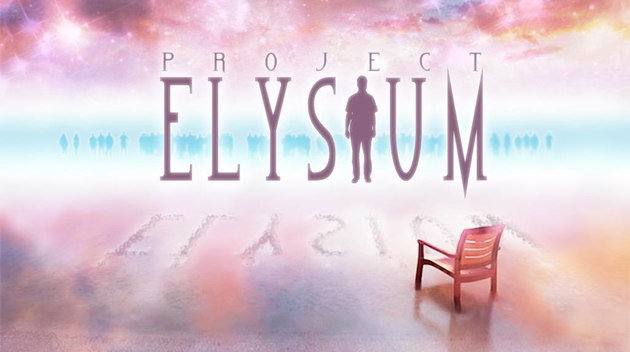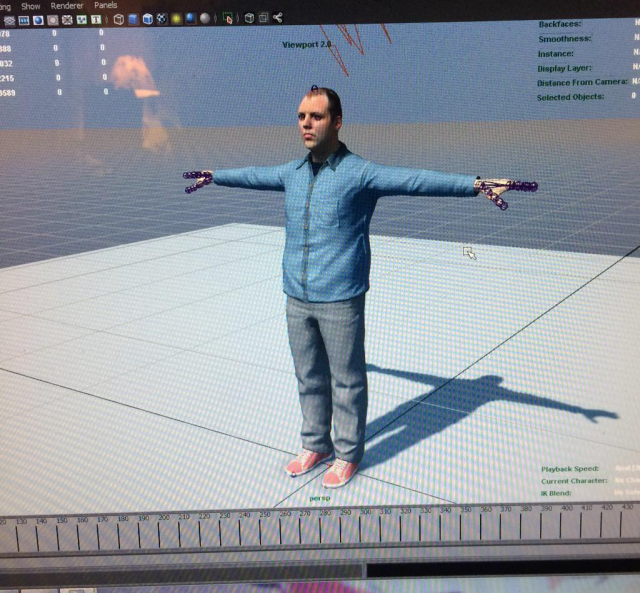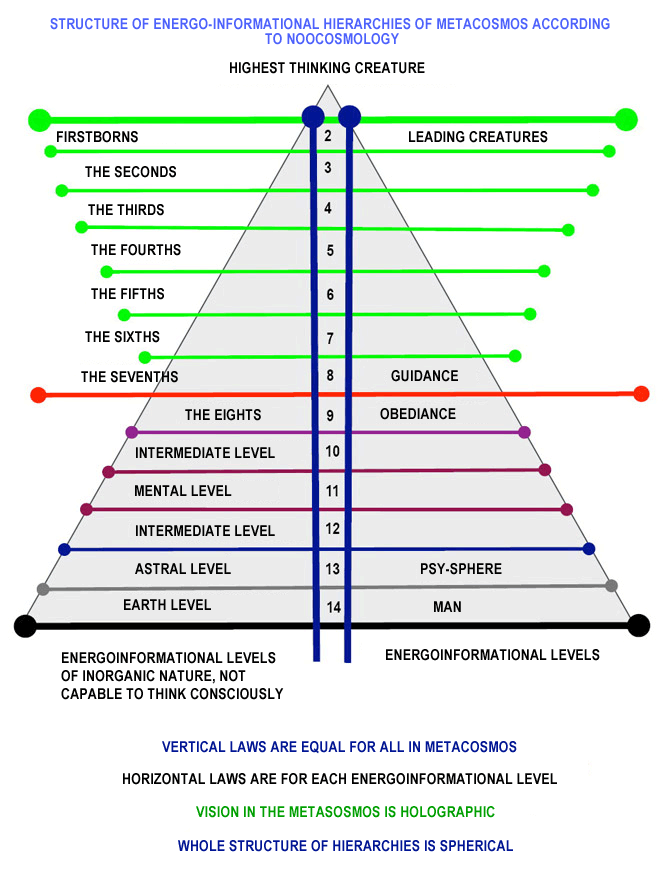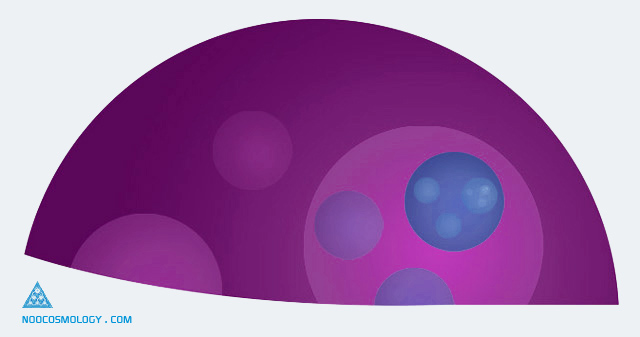John Heron on the concept and history of relational spirituality
Blogger Ref
http://www.p2pfoundation.net/Multi-Dimensional_Science
Definition
Relational spirituality defines itself in contrast to the vertical spirituality that focuses on inner transformation alone, in abstraction from the relational basis of human life; and in contrast to the authoritarian aspects of many traditional and contemporary spiritual paths. The following can serve as a good introduction to the topic.
Authors who have pioneered the concept and practice are John Heron and Jorge Ferrer. See the entry on
Participatory Spirituality for their views.
Citations
Here are three excerpts from John Heron, introducing the topic:
Relational spirituality
A convincing account of spirituality for me is that it is about multi-faceted integral development explored by persons in relation. This is because many basic modes of human development - e.g. those to do with gender, psychosexuality, emotional and interpersonal skills, communicative competence, morality, to name but a few - unfold through engagement with other people. A person cannot develop these on their own, but through mutual co-inquiry. The spirituality that is the fullest development of these modes can only be achieved through relational forms of practice that unveil the spirituality implicit in them (Heron 1998, 2005, 2006).
In short, the spirituality of persons is developed and revealed primarily in their relations with other persons. If you regard spirituality primarily as the fruit of individual practices, such as meditative attainment, then you can have the gross anomaly of a “spiritual" person who is an interpersonal oppressor, and the possibility of “spiritual" traditions that are oppression-prone (Heron, 1998; Kramer and Alstad, 1993; Trimondi and Trimondi, 2003). If you regard spirituality as centrally about liberating relations between people, then a new era of participative religion opens up, and this calls for a radical restructuring and reappraisal of traditional spiritual maps and routes.
Certainly there are important individualistic modes of development that do not necessarily directly involve engagement with other people, such as contemplative competence, and physical fitness. But these are secondary and supportive of those that do, and are in turn enhanced by co-inquiry with others.
On this overall view, spirituality is located in the interpersonal heart of the human condition where people co-operate to explore meaning, build relationship and manifest creativity through collaborative action inquiry into multi-modal integration and consummation. I propose one possible model of such collegial applied spirituality with at least eight distinguishing characteristics.
(1) It is developmentally holistic, involving diverse major modes of human development; and the holism is both within each mode and as between the modes. Prime value is put on relational modes, such as gender, psychosexuality, emotional and interpersonal skills, communicative competence, peer communion, peer decision-making, morality, human ecology, and more, supported by the individualistic, such as contemplative competence, physical fitness.
(2) It is psychosomatically holistic, embracing a fully embodied and vitalized expression of spirit. Spirituality is found not just at the ‘top end’ of a developmental mode, but in the ground, the living root of its embodied form, in the relational heart of its current level of unfolding, and in the transcendent awareness embracing it.
(3) It is epistemologically holistic, embracing many ways of knowing: knowing by presence with, by intuiting significant form and process, by conceptualizing, by practising. Such holistic knowing is intrinsically dialogic, action- and inquiry-oriented. It is fulfilled in peer-to-peer participative inquiry, and the participation is both epistemic and political.
(4) It is ontologically holistic, open to the manifest as nature, culture and the subtle, and to spirit as immanent life, the situational present, and transcendent mind. It sees our social relations in this present situation – our process in this place - as the immediate locus of the unfolding integration of immanent and transcendent spirit (Heron, 1998, 2005, 2006).
(5) It is focussed on worthwhile practical purposes that promote a flourishing humanity-cum-ecosystem; that is, it is rooted in an extended doctrine of rights with regard to social and ecological liberation.
(6) It embraces peer-to-peer, participatory forms of decision-making. The latter in particular can be seen as a core discipline in relational spirituality, burning up a lot of the privatized ego. Participatory decision-making involves the integration of autonomy (deciding for oneself), co-operation (deciding with others) and hierarchy (deciding for others). As the bedrock of relational spirituality, I return to it at the end of the paper.
(7) It honours the gradual emergence and development of peer-to-peer forms of association and practice, in every walk of life, in industry, in knowledge generation, in religion, and many more.
(8) It affirms the role of both initiating hierarchy, and spontaneously surfacing and rotating hierarchy among the peers, in such emergence. More on this later on.
Once it is grasped that the spirituality of persons is developed and revealed primarily in the spirituality of their relations with other persons, that as such it is a form of participative peer-to-peer inquiry, and that all this is a new religious dawn, without historical precedent, then it is reasonable to suppose that any authentic development of human spirituality in the future can only emerge within the light of this dawn. In other words, if a form of spirituality is not co-created and co-authenticated by those who practise it, it involves some kind of indoctrination, and is therefore, in this day and age, of questionable worth.
References
Heron, J. (1997) 'A Self-generating Practitioner Community' in R. House and N. Totton (Eds),
Implausible Professions: Arguments for Pluralism and Autonomy in Psychotherapy and Counselling, Ross-on-Wye: PCCS Books..
Heron, J. (1998)
Sacred Science: Person-centred Inquiry into the Spiritual and the Subtle, Ross-on-Wye: PCCS Books.
Heron, J. (1999)
The Complete Facilitator’s Handbook, London: Kogan Page.
Heron, J, (2005)
Papers on the Inquiry Group, www.human-inquiry.com/igroup0.htm
Heron, J, (2006) ‘Spiritual inquiry: a handbook of radical practice’, www.human-inquiry.com/thoughts.htm
Kramer, J. and Alstad, D. (1993)
The Guru Papers: Masks of Authoritarian Power, Berkeley: Frog Ltd.
Trimondi, V. and Trimondi, V. (2003)
The Shadow of the Dalai Lama: Sexuality, Magic and Politics in Tibetan Buddhism,
http://www.trimondi.de
Relational spirituality as primary in dipolar spiritual development By John Heron: (Adapted from pp. 99-101 of Heron, J. Sacred Science: Person-centred Inquiry into the Spiritual and the Subtle, Ross-on-Wye: PCCS Books, 1998.)
“My own view of spiritual development is:
(1) That it is dipolar, to do (a) with moral life committed to the empowerment of ourselves and other people in relationship, to the full flowering of our immanent life, in community embracing diversity in free unity, and (b) with the inner transformation of consciousness.
(2) That (a) is primary and the consummation of (b).
The tendency of the eastern mystic has been to reduce his involvement with other people to directing the vertical transformation of their consciousness. His commitment to his own transformation as an end-in-itself overflows into guiding other people to do the same. His moral goal has been to enable the unenlightened to become enlightened and so attain moksha, release from the treadmill of reincarnation in the phenomenal world, regarded for the most part as an illusion grounded on ignorance, want of discrimination. However, I regard the phenomenal world as an innovative process of divine becoming, within which we humans are co-creators of global transformation, a planetary civilization.
On this view, my spiritual development has these two interdependent aspects, primary and secondary. The secondary and supportive aspect is that it works to foster and facilitate, with others, the inner transformation of human consciousness, so that we may celebrate the integrated fullness of creation in its physical, subtle and spiritual dimensions (not so that we can get release from it all).
The primary aspect is that it works to release the life-potential of persons-in-relation, to facilitate social empowerment and social justice in every sphere of human activity. For persons to become full co-creators of a planetary civilization, each one has an all-pervasive right to participate in any decision that affects the fulfilment of their needs and interests, the expression of their preferences and values. This universal right has a claim not only within political institutions, but in every sphere of human association where decisions are being taken: in industry, education, ecology, medicine, the family, and, of course, in research and in religion . The fulfilment of this claim throughout our planet in all these spheres has hardly begun. Moreover, the fact that there is so much spiritual authoritarianism in the world, in creeds and cults both old and new, creates a deep attitudinal warp in people which makes them susceptible to oppression by many other kinds of external authority. In reviewing criticisms of the traditional hierarchical model of spiritual reality, promoted by current adherents of the perennial philosophy,
Donald Rothberg writes: Hierarchical ontologies are commonly ideological expressions of social and psychological relations involving domination and exploitation - of most humans (especially women, workers, and tribal people), of nature, and of certain parts of the self. Such domination limits drastically the autonomy and potential of most of the inhabitants of the human and natural worlds, justifying material inequalities and preventing that free and open discourse which is the end of a free society. It distorts psychological life by repressing, albeit in the name of wisdom and sanctity, aspects of ourselves whose full expression is necessary to full psychological health and well-being (Journal of Transpersonal Psychology, 1986, 18(1): 1-34).
My spiritual development, then, cannot be measured simply in terms of hours of meditation or number of extended retreats or stabilized attainment of some inner, transcendent state of mind, as I ascend the hierarchical spiritual ladder. On its own, this is vertical flight from full spiritual development, which I believe finds its primary consummation in the unfolding of my immanent spiritual life. And this, fully followed through, involves attention to social change and social justice through promoting participative forms of decision-making in every kind of human association with which I am involved, including the religious.
To summarize and restate the above: spiritual transformation of human beings has two complementary forms. The first form is about how persons realize in their exterior daily lives their immanent spiritual life and its potential. I believe this means developing the fulness of relational living, of expressive personal autonomy-in-connectedness, in terms of:
· Emotional and interpersonal competence: empowering self, the other and the relationship.
· The exercise of self-determination and co-operation in every situation of decision-making.
· The external expression of imaginative, creative skills .
· Commitment to social and planetary transformation.
· The grounding of life-style management in a co-creating relation with immanent spiritual life.
The second form is about how people open to a progressive interior transfiguration by a transcendent spiritual consciousness interdependent with immanent spiritual life. I believe this is secondary to, supportive of, and consummated in, the first form.
The following extract from my keynote talk at an international conference on “Living Spirit – New Dimensions in Work and Learning" at the University of Surrey, UK, in 2002, elaborates further the immanent relational pole of dipolar spiritual development.
Living spirit in the dawn of the age of immanence What I believe all this really shows is the newly emerging power of the human spirit, the dawning age of divine immanence, of the indwelling spirit that is the ground of human motivation. I think that living spirit is active within us, the very deep source of all human aspiration, both the will to live as a distinct individual, and the will to live as a universal participant – the will to be one of the creative Many and to be engaged with the creative One. These profound impulses have for the past 3,000 years been predominantly subordinate to the authoritative control of religious traditions, teachers and texts which have promoted spirit as primarily transcendent. And where these impulses have been emancipated from such control they have been reduced to secular status. Secular modernity has delivered huge gains in terms of relatively autonomous ethics, politics, science, knowledge generally, and art.
Yet it has championed the autonomy of the isolated Cartesian ego, separated off from the world it seeks to categorize, codify and manage. I do think this is the century of the spirit that is living deep within: the self-actualizing tendency of Rogers (1959, 1980), Maslow (1970), Gendlin (1981), embedded within the body-mind; the bio-spiritual experience of grace in the body of McMahon and Campbell (1991); Jean Houston’s entelechy self, the ground of one’s being, the root self whence all our possibilities emerge (Houston, 1987); Washburn’s dynamic ground of libido, psychic energy, numinous power or spirit (Washburn, 1995); Wilber’s ground unconscious, Eros, spirit-in-action (Wilber, 2000a).
Instead of appealing to the spiritual authority of teacher, tradition and text, an increasing number of people respond co-creatively with this divine dynamic moving within. Spiritual authority is found in the exercise of a deep kind of inner discrimination, where human autonomy and divine animation marry.
Nikolai Berdyaev (1874-1948), in the great tradition of European personalism, with which I align myself, was on to it with his affirmation of human personhood as manifesting the creative process of spirit. For he defined spirit as self-determining human subjectivity engaged in the realization of value and achieved in true community. He used the excellent Russian word sobornost to name such a community: it means diversity in free unity. Berdyaev also had a wonderful vision of the impending era, which he called the third epoch. The third epoch is the epoch of divine-human co-creation of a transformed planet, transformed persons, transformed social relationships (Berdyaev, 1937). Translated into my conceptual system, Berdyaev’s account means that living spirit manifests as a dynamic interplay between autonomy, hierarchy and co-operation. It emerges through autonomous people each of whom who can identify their own idiosyncratic true needs and interests; each of whom can also think hierarchically in terms of what values promote the true needs and interests of the whole community; and each of whom can co-operate with – that is, listen to, engage with, and negotiate agreed decisions with - their peers, celebrating diversity and difference as integral to genuine unity. Hierarchy here is the creative leadership which seeks to promote the values of autonomy and co-operation in a peer to peer association. Such leadership, as in the free software movement mentioned earlier, is exercised in two ways. First, by the one or more people who take initiatives to set up such an association. And second, once the association is up and running, as spontaneous rotating leadership among the peers, when anyone takes initiatives that further enhance the autonomy and co-operation of other participating members. The autonomy of participants is not that of the old Cartesian ego, isolated and cut off from the world. Descartes sat inside a big stove to get at his cogito, ergo sum - I think, therefore I am – and while his exclusively subjective self provided a necessary leverage against traditional dogmatisms to help found the modern worldview, it left the modern self alienated from the separated world it commands. The autonomy of those who flourish within sobornost, by contrast, is an autonomy that is rounded and enriched by a profound kind of inner animation, that develops and flourishes only in felt interconnectedness, participative engagement, with other persons, and with the biodiversity and integral ecology of our planet (Spretnak, 1995). This is the participatory worldview, expressed also in the extended epistemology I mentioned earlier on: our conceptual knowing of the world is grounded in our experiential knowing – a felt resonance with the world and imaginal participation in it. This epistemic participation is the ground for political participation in social processes that integrate autonomy, hierachy and co-operation. What we are now about is a whole collaborative regeneration of our world through co-creative engagement with the spirit that animates it and us.
For just a few of the many contributors to the participatory worldview see: Abram (1996); Bateson, 1979; Berman, 1981; Ferrer (2001); Heron, 1992, 1996a, 1998; Merleau-Ponty, 1962; Skolimowski (1994); Spretnak, 1991; Reason, 1994; Reason and Rowan, 1981; Tarnas (1991); Varela, Thompson and Rosch, (1991).
References from John Heron
Abram, D. (1996) The Spell of the Sensuous. New York: Vintage Books.
Baldwin, C. and Linnea, A. (2000) A Guide to PeerSpirit Circling. Langley, WA: PeerSpirit Inc.
Bateson, G. (1979) Mind and Nature: A Necessary Unity. New York: Dutton.
Bauwens, M. (2003) ‘Peer to Peer: from Technology to Politics’.
http://noosphere.cc/peerToPeer.html
Berdyaev, N. (1937) The Destiny of Man. London: Ayer.
Berman, M. (1981) The Reenchantment of the World. Ithaca, NY: Cornell University Press,
Bloom, W. (2001) The Endorphin Effect. London: Piatkus.
Blum, W. (2002) Rogue State: A Guide to the World’s Only Superpower. London: Zed Books.
Campbell, J. (1996) Traveler in Space: In Search of Female Identity in Tibetan Buddhism. New York: George Braziller.
Crook, J. (1996) ‘Authenticity and the practice of Zen’, New Ch’an Forum, 13: 15-30.
Ferrer, J. (2002) Revisioning Transpersonal Theory: A Participatory Vision of Human Spirituality. Albany, NY: SUNY Press.
angaji (1995) You Are That. Novato, CA: Gangaji Foundation.
Gendlin, E. (1981) Focusing. London: Bantam Press.
Govinda, L.A. (1960) The Foundations of Tibetan Mysticism. London: Rider.
Green Party of Utah (2002) ‘A happy ‘how to’ of formal consensus decision-making’ at www.greenpartyofutah.org
Heron, J. (1984) ‘Holistic endeavour in postgraduate medical eduction’ in The British Journal of Holistic Medicine, 1:1, 80-91.
Heron, J. (1988) ‘Assessment revisited’ in Boud, D. (ed) Developing Student Autonomy in Learning. London: Kogan Page.
Heron, J. (1992) Feeling and Personhood: Psychology in Another Key. London: Sage.
Heron, J. (1996a) Co-operative Inquiry: Research into the Human Condition. London: Sage.
Heron, J. (1996b) ‘Helping Whole People Learn’ in Boud D. and Miller N. (eds), Working with Experience: Promoting Learning. London: Routledge, 1996.
Heron, J. (1998) Sacred Science: Person-centred Inquiry into the Spiritual and the Subtle. Ross on Wye: PCCS Books.
Heron, J. (1999) The Complete Facilitator’s Handbook. London: Kogan Page.
Heron, J. (2001) Helping the Client: A Creative, Practical Guide. London: Sage.
Heron, J. (2002) ‘A revisionary perspective on human spirituality’, at www.human-inquiry.com
Heron, J. and Reason, P. (1985) Whole Person Medicine: A Co-operative Inquiry. London: British Postgraduate Medical Federation.
Houston, J. (1987) The Search for the Beloved. Los Angeles: Tarcher.
Maslow, A. (1970) Motivation and Personality. New York: Harper & Row.
McMahon, E. and Campbell, P. (1991) The Focusing Steps. Kansas City, MO: Sheed and Ward.
Merleau-Ponty, M. (1962) Phenomenology of Perception. London: Routledge and Kegan Paul.
Monroe, R.A. (1972) Journeys Out of the Body. London: Souvenir Press.
Peat, F.D. (1996) Blackfoot Physics. London: Fourth Estate.
Peat, F.D. (1997) Infinite Potential: The Life and Times of David Bohm. New York: Addison Wesley.
Reason, P. (1994) (ed) Participation in Human Inquiry. London: Sage.
Reason, P. and Bradbury, H. (eds) (2001) Handbook of Action Research. London: Sage.
Reason, P. (ed) (2002) Special issue, ‘The Practice of Co-operative Inquiry’, Systemic Practice and Action Research, 14(6).
Reason, P. and Rowan, J. (eds) (1981) Human Inquiry: A Sourcebook of New Paradigm Research. Chichester: Wiley.
Tarnas, R. (1991) The Passion of the Western Mind. New York: Ballantine.
Rogers, C. (1959) ‘A theory of therapy, personality, and interpersonal relationships, as developed in the client-centred framework’, in S. Koch (ed) Psychology: A Study of a Science, Vol 3. New York: Penguin.
Rogers, C. (1980) A Way of Being. Boston: Houghton Mifflin.
Skolimowski, H. (1994) The Participatory Mind. London: Arkana.
Spretnak, C. (1991) States of Grace: The Recovery of Meaning in the Postmodern Age. San Francisco: Harper-Collins.
Spretnak, C. (1995) ‘Embodied, embedded philosophy’, Open Eye, California Institute for Integral Studies, 12(1): 4-5.
Varela, F. J., Thompson, E. and Rosch, E. (1991) The Embodied Mind: Cognitive Science and Human Experience. Cambridge, MA: MIT Press.
Washburn, M. (1995) The Ego and the Dynamic Ground. Albany, NY: SUNY Press.
Wilber, K. (2000a) Integral Psychology. Boston: Shambhala.
Wilber, K. (2000b) One Taste: Daily Reflections on Integral Spirituality. Boston: Shambhala.
Yorks, L. and Kasl, E. (eds) (2002) Collaborative Inquiry as a Learning Strategy. San Francisco: Jossey-Bass.
More Information
John Heron and the critique of Wilber's Integral Theory approach, at
http://blog.p2pfoundation.net/?p=10
Key Books to Read:
1. Jorge Ferrer. Revisioning Transpersonal Psychology. A Participatory Vision of Human Spirituality. SUNY, 2001
This is the key classic to have reformulated a participatory vision of spirituality from out of the transpersonal psychology tradition. The first part deconstructs the non-relational biases of transpersonal psychology, while the second part attempts to reconstruct a new vision based on participation. Strongly recommended.
2. John Heron. Sacred Science: Person-centered inquiry into the spiritual and the subtle. PCCS Books, 1998
Together with Ferrer, John Heron is the second contemporary author to have reformulated a participatory vision of relational spirituality. This book is more practically oriented towards the practice of cooperative inquiry into the spiritual, but reviews the theoretical grounding that founds the practice as well. Part 1, ‘Perspectives of Lived Inquiry’ focuses on the issue of spiritual authority; Part 2, ‘Co-operative Inquiry Reports’, explains the process, and Part 3, reviews the theoretical grounding of such practice.
3. Henryk Skolimowski. The Participatory Mind : A New Theory of Knowledge and of the Universe. Arkana ,1995
Foundational critique of the mechanistic view of the human mind, with a historical reconstruction of the participatory worldview.



